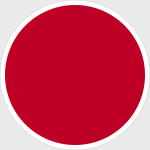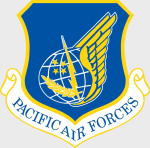Hobby Master HA3401 Japanese Air Self-Defense Force Mitsubishi F-1 Fighter - 3rd Squadron, 3rd Air Wing, Misawa Air Base, Japan (1:72 Scale)
"Obsolete weapons do not deter."
- British Prime Minister Margaret Thatcher
 The Mitsubishi F-1 is Japan's first, post WWII, domestically developed jet fighter, and was the first fighter to enter production in Japan since the end of World War II. Mitsubishi Heavy Industries and Fuji Heavy Industries jointly developed the F-1. At first glance, it resembles the French/Anglo SEPECAT Jaguar, but was a completely independent Japanese effort (although it uses the same engines).
The Mitsubishi F-1 is Japan's first, post WWII, domestically developed jet fighter, and was the first fighter to enter production in Japan since the end of World War II. Mitsubishi Heavy Industries and Fuji Heavy Industries jointly developed the F-1. At first glance, it resembles the French/Anglo SEPECAT Jaguar, but was a completely independent Japanese effort (although it uses the same engines).
In the mid 1960s, the Japan Air Self-Defense Force (JASDF) commenced studies into an advanced jet trainer which could also be modified to serve in the ground attack and anti-shipping roles. After considering license production of the T-38 Talon and SEPECAT Jaguar, Japan decided to develop its own trainer, the supersonic Mitsubishi T-2, this first flying on 20 July 1971. Cost over-runs in the T-2 program lead to the proposed single seat attack version almost being abandoned, but the cancellation of the Kawasaki P-XL, the planned replacement for Japan's Kawasaki P-2J maritime patrol aircraft freed-up funds, while making it important to keep Japan's aviation industry employed, and contracts were awarded for the development of the attack version as the FS-T2kai in 1973.
The new aircraft was a minimum change derivative of the T-2, with the rear cockpit being converted to an avionics bay by removing the rear seat, and replacing the canopy with a simple unglazed access hatch. Two additional hardpoints were fitted under the wing to allow carriage of a heavier weapon load, and the avionics were improved, with a new J/AWG-12 radar set, similar to that fitted in British Royal Air Force F-4M Phantom fighter jets. This set provides ranging information. Aside from the avionics changes, deletion of the rear seat, and new one-piece canopy, the only other major change from the T-2 was the beefing up of the aircraft to enable it to carry a larger weapons load than the T-2. The F-1 is fitted with an internally-mounted 20 mm JM61A1 Vulcan cannon with 750 rounds of ammunition. The aircraft also has seven external hardpoints for the carriage of a wide variety of stores. The fuselage hardpoint and inboard pair of underwing hardpoints are "wet", which means they can be used to carry external fuel tanks to increase the aircraft's range. The primary weapon of the F-1 is the ASM-1 and the newer ASM-2 long-range anti-ship missile. This weapon is roughly in the class of the American AGM-84 Harpoon or French AM.39 Exocet. Other weapons carried include the all-aspect short-range heat-seeking AIM-9 Sidewinder air-to-air missile for air-to-air combat. This weapon is carried on the wingtip rails usually, but it can also be carried on the outboard underwing hardpoints for the F-1's secondary air defense role. Other air-to-ground weapons carried include rocket pods (JLAU-3/A) of 70 mm (2.75 in) size as well as bombs of 227 kg (500 lb) and 340 kg (750 lb) in size (Mk82 and M117 respectively). In addition, the Mk-82 and M117 bombs can be fitted with infrared guidance kits, turning them into precision-guided weapons that home in on heat radiation emitted from seaborne targets such as ships or other ground-based targets. When fitted with this kit, the bomb becomes known as GCS-1.
The F-1 has slowly been replaced over the years by the newer F-2 (Japan/U.S. developed, based on F-16C/D), as well as upgraded F-4EJ "Kai" Phantom IIs. Units currently using the F-1 are scheduled to change over to the new F-2 over the next several years. One unit has already traded in its F-1s for F-4EJ Kais. Six F-1s based at Tsuiki in Fukuoka Prefecture were retired on March 9th, 2006, having reached the 4,000 hour limit of their airframes.
Pictured here is a 1:72 scale replica of a Japanese Air Self Defense Force Mitsubishi F-1 fighter that was assigned to the 3rd Squadron, 3rd Air Wing, deployed to Misawa Air Base, Japan.
Sold Out!
Dimensions:
Wingspan: 7-inches
Length: 8-inches
Release Date: August 2011
 Historical Account: "Joint Services" - Misawa Air Base is a United States military facility located in the city of Misawa, 3 miles (4.8 km) west of the Pacific Ocean, 10 miles (16 km) northeast of Towada, 18 miles (29 km) northwest of Hachinohe, and 425 miles (684 km) north of Tokyo, in Aomori Prefecture, in the Tahoku region in the northern part of the island of Honshu of Japan. It is a Pacific Air Forces (PACAF) facility with the 35th Fighter Wing (35 FW) as its host wing.
Historical Account: "Joint Services" - Misawa Air Base is a United States military facility located in the city of Misawa, 3 miles (4.8 km) west of the Pacific Ocean, 10 miles (16 km) northeast of Towada, 18 miles (29 km) northwest of Hachinohe, and 425 miles (684 km) north of Tokyo, in Aomori Prefecture, in the Tahoku region in the northern part of the island of Honshu of Japan. It is a Pacific Air Forces (PACAF) facility with the 35th Fighter Wing (35 FW) as its host wing.
Misawa is the only combined, joint service installation in the western Pacific. It houses three U.S. military services (Army, Navy, and Air Force), as well as the Japan Air Self Defense Force. The base is home to 5,200 US military personnel, as well as 350 US civilian employees and 900 Japanese national employees.
Misawa also has scheduled civilian flights operated by Japan Airlines to Tokyo International Airport (Haneda) and Osaka International Airport (Itami), making it one of the few joint civilian-military airports in the U.S. defense grid.
The Misawa Passive Radio Frequency space surveillance site is used for tracking satellites using the signals they transmit. It also provides coverage of geosynchronous satellites using the Deep Space Tracking System (DSTS). The Misawa Security Operations Center (MSOC), located in the northwestern part of the Air Base, is believed to be one of the largest ECHELON ground stations.









